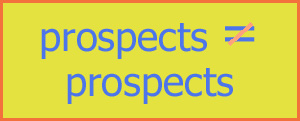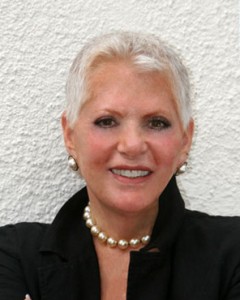 By guest blogger
By guest blogger
Sharon Drew Morgen
As sellers, we’ve been taught that someone with a need that our solution fulfills is a prospect. But that’s not true or we’d be closing a lot more business and wasting a lot less time following the wrong prospects. Just because we see a need does not mean they:
A. want it resolved
B. want it resolved now
C. have the buy-in to bring in an external solution rather than using their own internal fix or beloved vendor
D. are ready to give up the work-around they have in place that resolves the problem well enough.
So Rule #1: Need does not a prospect make.
Unfortunately, the sales model has no capability to go behind-the-scenes to facilitate buy-in from the internal system—the other people who don’t see a need or don’t want to share budget, the tech group that wants to do it all themselves, or the president who has her own agenda and hasn’t informed everyone yet.
Rule #2: Until everyone and everything that will touch the new solution buys in to bringing it on board, there will be no purchase, regardless of a need.
THE SYSTEM IS MORE POWERFUL THAN THE NEED
Buyers have systems problems; a solution purchase (or any sort of change) is merely the last element in a chain of events that must fit together so everything internally keeps ticking along comfortably.
Rule #3: The system is sacrosanct, regardless of the efficacy of your solution.
Here are two situations in which I failed miserably (and lost quite a bit of money), prior to understanding that buyers (in companies and individuals) must manage internal stability before they can buy.
I did a pilot for an iconic multinational. Using Buying Facilitation® the group had a 400% increase in sales over the control group (we shortened the sales cycle from 7 months to 4 weeks). They got rid of me because the problems caused by increased revenue and cash flow issues, shifts of the manufacturing schedules, etc., would cost many millions to fix. They eschewed the increased profit to maintain the system.
I trained a large insurance group that got a 600% increase in sales over the control group (they went from 110 visits and 18 closed sales to 27 visits and 25 closed sales). After the results were in, the trained team handed in their resignations because they said they were “field sales” reps and would rather quit then come inside, regardless of how much money they made. They liked handing out donuts and schmoozing.
From my point of view this is nuts. But from theirs it made sense. Systems maintain their status quo at all costs, regardless of the benefits of our solutions. Indeed, if the system had wanted to change and knew how to change without disrupting the status quo, it would have already. Systems prefer excellence so long as there is stability.
THE SALES MODEL IS SOLUTION-BASED; BUYING IS SYSTEMS-BASED
Philosophically, the sales model is accurate: we can see needs that our solutions will resolve. But it’s not a prospect until or unless the Buying Decision Team—everyone who will touch the final solution—is ready, willing, and able to bring our solution in and knows how to shift rules or job descriptions, bring in new technology without downtime, and ensure there are no historic blind spots.
I developed Buying Facilitation® in 1983 to manage the sales issues my team was having in my new tech company. After 5 prior years in sales, I couldn’t make sense of why “prospects” weren’t buying as often as was logical. But as an entrepreneur who needed to purchase solutions myself, I faced the problem all buyers face: how, when, if to make a change and avoid disruption. So I developed Buying Facilitation® and trained my team.
We began doubling our sales. I even taught my techies how to facilitate their users to make sure they got the buy-in for their programs and projects and got the right data at the right time.
Facilitate systemic change in your area of expertise first—enter each sales call as a facilitator rather than as a detective seeking a need/solution match. Help prospective buyers determine how to change, how to get buy-in, how to bring in your solution. Along the way, you both will determine next steps, who needs to be included, and how to get everyone on board—with you!—to move toward the remedy your solution will provide. And then you can sell.
Buying Facilitation® first, then sales. You need both.
 Sharon Drew Morgen has been helping sellers influence and facilitate the buyer’s behind-the-scenes buying journey since the mid 80s, coining the terms Buying Patterns, Buying Path, Buying Decision, Buy Cycle, Buying Decision Team, and Buying Facilitation®. Her unique capability to recognize where buyers are stuck in the buy cycle, and designing strategies to teach buyers how to traverse their buy-in activities, have made her a sought-out coach and consultant. To learn more or to contact Sharon Drew, visit SharonDrewMorgen.com.
Sharon Drew Morgen has been helping sellers influence and facilitate the buyer’s behind-the-scenes buying journey since the mid 80s, coining the terms Buying Patterns, Buying Path, Buying Decision, Buy Cycle, Buying Decision Team, and Buying Facilitation®. Her unique capability to recognize where buyers are stuck in the buy cycle, and designing strategies to teach buyers how to traverse their buy-in activities, have made her a sought-out coach and consultant. To learn more or to contact Sharon Drew, visit SharonDrewMorgen.com.

Leave a comment